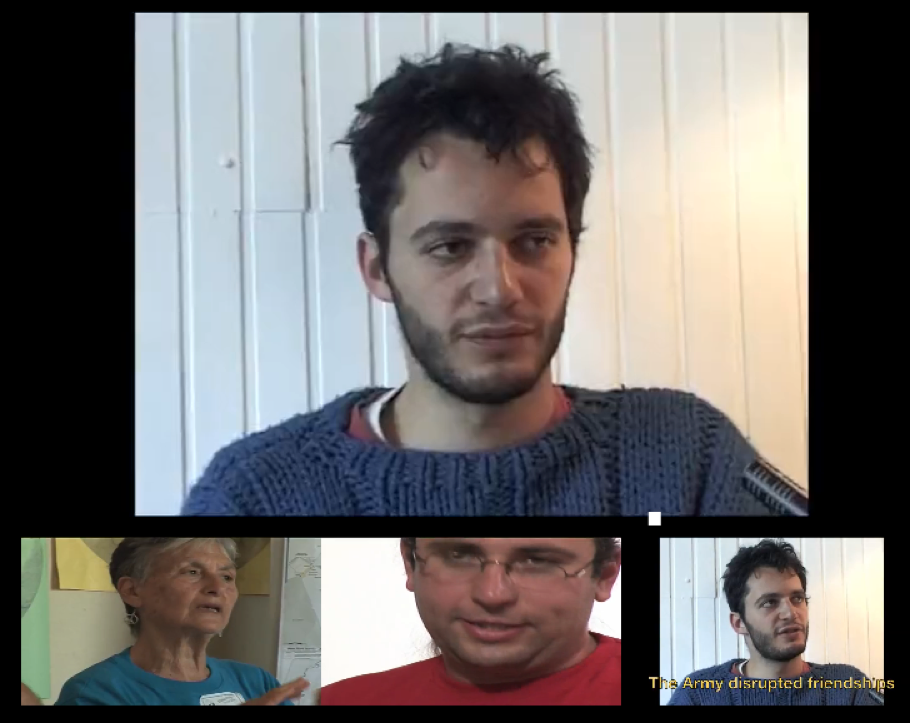The Only Democracy? » Victories for Democracy » Following Barrier’s Rerouting, Residents of Bil’in to Start Building “Bil’in West”
Following Barrier’s Rerouting, Residents of Bil’in to Start Building “Bil’in West”
From the Popular Struggle Coordination Committee
VIdeo of the victory celebrations, warning contains LOTS of car honking!
This Friday, as part of the weekly demonstration, residents of Bil’in will commence the construction of a new neighborhood of the village, ‘Bil’in West”, on lands returned to the village following the rerouting of Israel’s Separation Barrier.
What: Construction of new neighborhood on lands returned to Bil’in
Where: The mosque in Bil’in, West of Ramallah
When: Friday, July 1st at 12:30
Six years after their struggle has begun and four years after the Israeli High Court has ordered the rerouting of the Wall on Bil’in’s lands, residents of the village will finally have free access to 600 dunams (150 acres) of land that were previously sequestered behind the Wall.
While continuing to fight for the remaining 1350 dunams (330 acres) that are effectively annexed to the settlement of Modi’in Illit, the Bil’in Popular Committee announced a new strategy of building community and public buildings on lands that were given back as a way to assert their possession of them.
The regained land is designated as Area C, over which Israel retains complete control of both security and administrative matters. Due to this fact, it is nearly impossible for Palestinians to receive building permits in area C. Palestinian structures built without permit in Area C are often demolished by Israeli authorities and are almost never retroactively whitewashed. In contrast, illegal and unpermitted settlement construction is often retroactively issued the required construction permits, as was the case in the Matityahu East neighborhood of the Modi’in Illit Settlement, which was built on Bil’in’s lands.
Background
On the morning of Tuesday, the 21st of June, army bulldozers began work to dismantle the Wall in Bil’in. As early as 2007, after two years of weekly protests in the village and following a petition filed by the residents, Israeli high court declared the path of the Barrier illegal. The court ruled that the route was not devised according to security standards, but rather for the purpose of settlement expansion. Despite the high court’s ruling four more years of struggle had to elapse for the army to begin dismantlement. During these years two people were killed in the course of the weekly protests and many others injured.
Yet even according to the new path, sanctioned by the high court, 435 acres of village land will remain on the “Israeli” side of the Barrier.
On September 4th, 2007, the high court ordered the state to come up with an alternative path for the existing Barrier in Bil’in within a reasonable period of time. Despite the ruling, many months elapsed and no new plan was offered. On the May 29th, 2008, the residents of Bil’in filed a petition to hold the state in contempt of the court due to this delay. In response to the petition, the state offered an alternative path. However, the plan failed to comply with the high court’s ruling as the proffered path left a large area designed for settlement expansion on the “Israeli” side of the Barrier. The only difference between the two paths being that the latter offered to award 40 acres of land back to the residents.
A second petition claiming the alternative path not in accordance with court ruling was then filed. On August 3rd, 2008, the court declared that the first alternative path indeed fails to adhere to the ruling. The court ordered the state to come up with another alternative path.
On September 16th, 2008, the state offered a second alternative path. This path also left a large area designed for settlement expansion on the “Israeli” side, offering to return a100 acres of village land to the residents. A lawyer for the residents asked that the state be held in contempt of the court for violating a court ruling for the second time.
On December 15th, 2008, the high court ruled that the second alternative path was not in accordance with the original court ruling.
In April 2009 the state offered a third alternative path which left most of the area destined for settlement expansion on the “Palestian” side of the Barrier, thereby returning to the village 150 acres of 490 acres annexed by the original path.
Filed under: Victories for Democracy · Tags: Bi'lin, Friday, Israeli Supreme Court, Popular Struggle, protests, Wall








 “You have a choice! Israeli Anti-Militarists Speak”
“You have a choice! Israeli Anti-Militarists Speak”